The Evolution and Impact of iPhone Charger Manufacturers


Intro
The landscape of iPhone charger manufacturers is a complex and evolving one. This article aims to provide insights into how these manufacturers have developed over time and their impact on the broader electronics ecosystem. Understanding the nuances of this field can equip consumers with the knowledge needed to make informed decisions regarding their charger purchases.
As technology advances, so too does the need for innovative charging solutions. The growth of the iPhone charger market reflects broader trends in powering devices. Factors such as charging speed, quality, and compatibility have shaped the behaviors of manufacturers and consumers alike. In the following sections, we will delve into technical specifications, product comparisons, practical applications, the latest trends, and buying guides pertinent to iPhone chargers, ensuring a comprehensive view of this vital market.
Technical Specifications
When evaluating iPhone chargers, technical specifications play a critical role in determining their effectiveness and suitability for various devices. Here are key areas of focus:
Detailed Product Specs
Chargers come with various specifications that dictate performance. Common specifications include:
- Output Voltage: Typically 5 volts, but can go up to 20 volts for fast charging.
- Output Current: Measured in amps, a higher current rating usually equates to quicker charging.
- Charging Protocols: Many chargers support protocols like USB Power Delivery and Qualcomm Quick Charge.
Performance Metrics
Performance of a charger can be quantified through metrics such as:
- Efficiency Rate: The percentage of energy converted from AC to DC. Higher efficiency minimizes energy waste.
- Charging Time: How long it takes to fully charge an iPhone. Information is often available directly from manufacturers.
Compatibility Information
Compatibility is essential for any charger. Here is what to know:
- Device Compatibility: Not every charger works with every iPhone model. Understanding which chargers are designed for specific models is crucial.
- Third-Party Compatibility: Many third-party chargers conform to Apple's standards, but verification is required.
The advancement in technical specifications reflects the continuous evolution of charging technology, ensuring that users receive the best possible performance.
Intro to iPhone Charger Manufacturers
The landscape of iPhone charger manufacturers is complex but crucial to the user experience of Apple's mobile devices. Over the years, the evolution of these manufacturers has played a significant role in shaping charging technology and influencing consumer patterns. As the demand for more efficient charging solutions increases, understanding the manufacturers behind these devices becomes essential. The chargers' performance, safety features, and compatibility with various iPhone models directly impact user satisfaction.
Key aspects to consider include:
- The shift from traditional charging methods to innovative technologies.
- The competition between in-house and third-party manufacturers.
- The role of quality standards in ensuring safety and performance reliability.
By diving into the intricate relationships between various manufacturers, this article aims to provide insights into their relevance within the broader electronics ecosystem. The findings will benefit tech-savvy consumers, gamers, and everyday users seeking reliable charging solutions for their devices.
Understanding the Role of Manufacturers
Manufacturers of iPhone chargers contribute significantly to the accessibility and functionality of mobile technology. Their roles can be categorized into several key functions:
- Innovation: Many manufacturers invest resources into research and development. This commitment leads to advancements in charging technology, enhancing speed and efficiency.
- Safety Compliance: Ensuring that chargers adhere to safety regulations is paramount. Compliance helps protect users from faulty products that may cause damage or pose hazards.
- Market Dynamics: Manufacturers influence market trends. The emergence of third-party chargers alongside Apple's products creates a competitive environment that spurs innovation.
The relationship between the manufacturer and the consumer is multifaceted. Manufacturers need to understand user needs while maintaining profitability. As such, they continually adapt to the rapidly changing landscape of technology.
The importance of understanding manufacturers cannot be overstated; they are pivotal in defining the efficiency and safety of charging experiences for iPhone users.
In summary, exploring the roles of these manufacturers creates a clearer picture of the charging ecosystem. It fosters informed choices, aligning with the expectations of a discerning audience keen on optimizing their iPhone charging experience.
iPhone Charger Evolution
The evolution of iPhone chargers is critical in understanding how technology has progressed and adapted to user needs over the years. As devices have become more advanced, the accompanying charging solutions have similarly transformed, integrating enhanced functionality and efficiency. Analyzing this evolution gives insights into not just the chargers themselves, but also the overarching trends in technology adoption and consumer behavior. These changes warrant keen attention, especially for users focused on performance and sustainability.
Historical Timeline of iPhone Chargers
The journey of iPhone chargers began in 2007 with the release of the original iPhone. At that time, Apple implemented a 30-pin connector for charging and data transfer. This connector served users well, but it was bulky and limited in speed compared to what was to come.
In 2012, Apple introduced the Lightning connector with the iPhone 5. Characterized by its smaller size and reversible design, the Lightning connector marked a significant shift in charging standards. It facilitated faster data transfer and addressed the user demand for a more elegant and efficient charging solution.

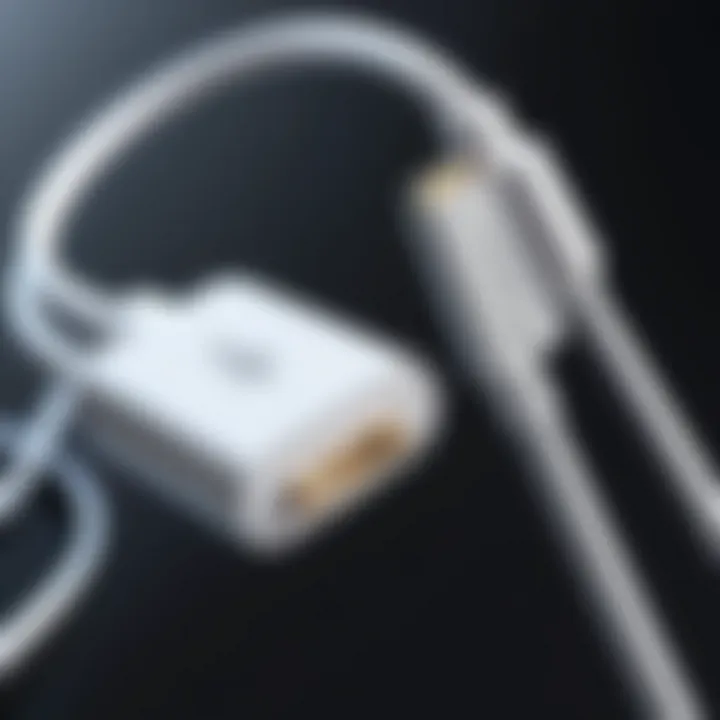
The next major leap occurred with the advent of USB Power Delivery (USB PD), which Apple embraced in 2017 with the iPhone 8 and later models. USB PD allowed for rapid charging capabilities, where devices could draw more power, thereby reducing the charging time significantly. This was a turning point for users who constantly sought quicker recharges in their busy lives.
Apple has continually updated its charging solutions, keeping pace with technological demands and consumer preferences. Each iteration has seen improvements in efficiency, compatibility, and convenience, aligning chargers with the needs of modern devices.
Technological Advances in Charging Technology
Beyond the connectors, the technological progress in charging methodologies has been impressive. Initially limited to standard wall charging, innovations like fast charging have transformed the user experience. Fast charging technology utilizes higher wattage to decrease the time taken to achieve a full charge.
Another fascinating development has been the rise of wireless charging. Introduced with the iPhone 8, this feature has offered a new level of convenience, allowing users to simply place their devices on charging pads without the hassle of plugging in cables. This has implications not only for convenience but also for design, influencing how devices and charging accessories are crafted.
The evolution continues with advanced technologies such as GaN (gallium nitride) chargers, which promise even greater efficiency and smaller sizes. These chargers operate at higher efficiencies, converting more energy into usable power, which is essential as we navigate the complexities of energy consumption in the tech landscape.
"The iPhone charger evolution mirrors technological advancements in the broader electronics landscape, presenting a convergence of user demand, efficiency, and power management."
In summary, the iPhone charger evolution exemplifies the march of technology, showcasing how consumer needs, safety regulations, and innovation intersect. As this landscape continues to change, users must stay informed about the latest developments to make informed choices.
Major Players in the Charger Manufacturing Industry
The charger manufacturing industry is complex, with multiple key players influencing market dynamics. Understanding these major manufacturers gives insight into how chargers are developed, produced, and marketed. Each manufacturer has its unique advantages, challenges, and contributions to the technology landscape. Recognizing these factors allows consumers to make informed decisions about their charging accessories.
Apple's In-House Charger Production
Apple's approach to charger production is notable for its integration of design and functionality. The company invests heavily in research and development to ensure that its chargers not only meet user needs but also complement its devices aesthetically and operationally. Apple's chargers prioritize safety and efficiency. For example, the company's wall adapters and cables often incorporate features like over-current protection, which helps maintain device safety during charging.
Moreover, Apple is recognized for its commitment to quality. Each product undergoes rigorous testing, ensuring that chargers perform reliably across various scenarios. This dedication contributes to Apple’s strong reputation in the market and gives consumers confidence when purchasing official products. Additionally, when using Apple's chargers, users experience optimal performance, as the accessories are engineered alongside their devices.
Leading Third-Party Chargers
Third-party charger manufacturers like Anker, Belkin, and Aukey have emerged as significant players in the market. These brands offer alternatives to Apple’s own chargers, often at competitive prices. They have been successful by prioritizing innovation and catering to specific user demands. For instance, many third-party chargers implement fast charging technology, appealing to users who seek efficiency.
While third-party chargers can provide value, consumers should consider potential drawbacks. Not all of these products meet Apple’s quality standards, leading to compatibility issues. Some non-Apple chargers may fail to deliver fast charging or can pose safety risks. Hence, doing research before making a purchase is essential.
Overall, the diversity of manufacturers in the charger market gives consumers various choices, catering to different needs and preferences. However, the importance of quality and compatibility cannot be overstated when choosing a charger to ensure a positive user experience.
Quality Standards and Regulations
Quality standards and regulations are essential in the realm of iPhone charger manufacturing. They not only ensure the safety and reliability of chargers but also contribute to the overall user experience. In a market flooded with various manufacturers, quality distinguishes brands in a competitive landscape. These standards play a key role in promoting consumer confidence and fostering innovation.
Safety Certifications for iPhone Chargers
Safety certifications are crucial for all electronic accessories, including iPhone chargers. Certifications like UL (Underwriters Laboratories) and CE (Conformité Européenne) provide assurance that the products have undergone rigorous testing. These tests evaluate various aspects such as electrical safety, risk of overheating, and fire hazards.
Consumers should pay close attention to chargers that lack these certifications. Using uncertified products can lead to malfunctions, compatibility issues, or even dangerous situations like short circuits or fires.
The absence of proper safety certifications can undermine user confidence and poses risks not just to devices but to personal safety as well.
The Role of USB-IF Standards
USB-IF (USB Implementers Forum) standards are another critical component of charger quality. These standards set technical specifications for USB connectors, cables, and chargers to promote universal compatibility and performance across devices. Following USB-IF standards ensures that chargers can efficiently deliver the necessary power without causing damage to devices.
Third-party manufacturer compliance with these standards significantly affects their chargers’ performance. Products that adhere to USB-IF specifications are more likely to support features such as fast charging and data transfer capabilities. In contrast, non-compliant chargers may not function as intended and could potentially harm the device they are meant to charge.
In summary, quality standards and regulations form the backbone of the iPhone charger industry, safeguarding users while enhancing the overall charging experience.
Compatibility Issues
The topic of compatibility issues is crucial in understanding iPhone charger manufacturers. An effective charging solution is not just about having the right device; it is also about ensuring that the chargers can seamlessly work with various iPhone models. This section will delve into the specifics of compatibility between chargers and different models, as well as the challenges faced when utilizing non-Apple chargers.
Identifying Compatible Chargers for Various iPhone Models
When it comes to identifying compatible chargers, it is essential to recognize that Apple has made several changes to its charging standards over its product lineage. Each iPhone model may have varying requirements based on power output, charging port type, and connection protocols. For example, the introduction of the Lightning port with the iPhone 5 marked a significant shift from the 30-pin connector used in earlier models.
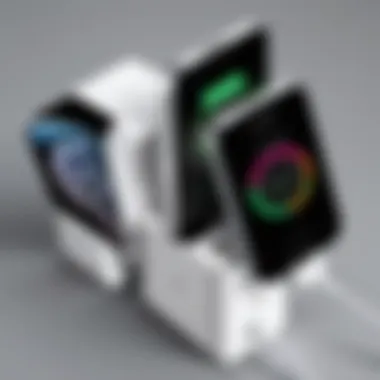
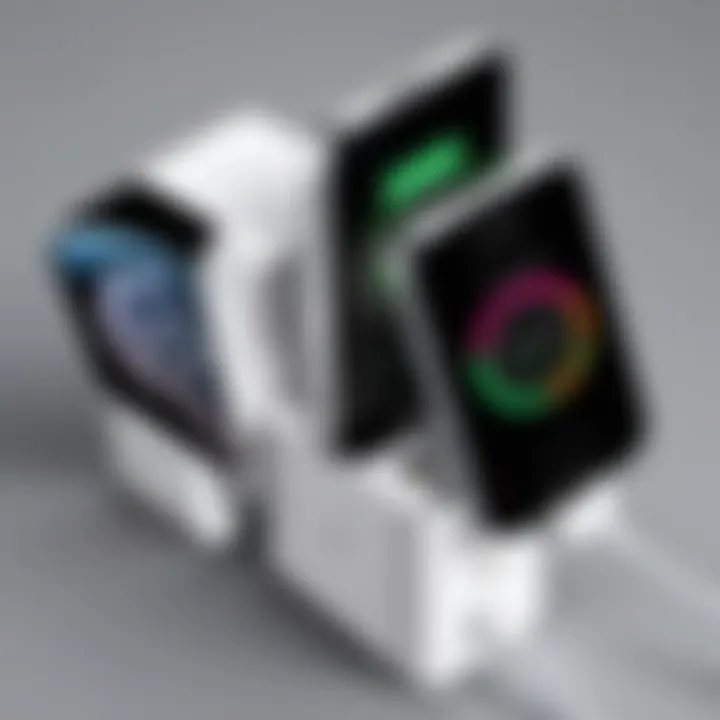
- Lightning Chargers: From iPhone 5 onwards, Apple adopted the Lightning connector. It is crucial to use chargers that support the Lightning standard. Third-party manufacturers should ideally provide MFi (Made for iPhone) certification to ensure compatibility and reliability.
- USB-C Adoption: Beginning with the iPhone 8 and onward, Apple started to embrace USB-C technology with fast-charging capabilities. Users must ensure that their chargers support USB Power Delivery (USB PD) standards to benefit from rapid charging. Many leading brands, such as Anker and Belkin, offer compatible USB-C chargers that fulfill these standards.
Compatibility extends beyond simply matching the connector. Users will find that:
- Power Ratings: Chargers may offer different wattages. iPhones can typically work with lower wattage chargers, but to make full use of fast charging, an 18W or higher charger is recommended.
- Smart Features: Some chargers detect the optimal charging rate based on the device connected, which adds to the compatibility and charging efficiency.
Challenges with Non-Apple Chargers
While non-Apple chargers can provide viable options, they come with a unique set of challenges. Not all third-party chargers guarantee safety or effectiveness, and this can lead to potential risks including poor charging performance and even device damage.
- Quality Variability: The manufacturing quality of non-Apple chargers can vary significantly. Inexpensive, low-quality products may not meet safety standards, leading to overheating or rapid wear of the iPhone’s battery.
- Lack of Certification: Many third-party options lack the MFi certification, meaning they might not be optimized for use with iPhones. This increases the risk of connectivity issues, overheating, or short-circuiting.
- Firmware Updates: Non-Apple chargers may not adapt to the latest Apple firmware updates, which can affect compatibility, potentially leading to slower charging times or charging failures.
“When selecting a charger, it is best to prioritize quality and certification over cost. A poor-quality charger can cause unforeseen damage to your device.”
Understanding these factors helps users navigate the myriad of options available and makes it easier to choose the right charger that suits their iPhone model. It is vital to stay informed and cautious, ensuring charger selections align with the specifications of the iPhone for optimized performance.
The Impact of Third-Party Chargers
The influence of third-party chargers in the iPhone ecosystem is substantial. These chargers, produced by various manufacturers, extend the range of options available to consumers. This impact is vital, as it shapes consumer behavior, market trends, and even the landscape of charging technology itself.
Analyzing the Market for Third-Party Chargers
The market for third-party chargers has grown steadily over recent years. It offers consumers an alternative to Apple’s original chargers. Many companies have emerged, developing chargers that are often more affordable and cater to diverse needs. Brands like Anker, Aukey, and Belkin have established themselves as reputable sources for third-party iPhone chargers.
Several factors contribute to their success:
- Price Competitiveness: Third-party chargers typically cost less than Apple's in-house products, attracting price-sensitive consumers.
- Diverse Product Range: Different types of chargers, such as fast chargers and wireless options, appeal to varying user preferences.
- Innovative Features: Some manufacturers implement advanced technologies, like Power Delivery, that may surpass Apple's offerings.
Despite these advantages, the rapid growth of this segment brings challenges. Counterfeit and substandard chargers flood the market, posing safety risks to consumers and potential damage to devices.
Pros and Cons of Using Non-Apple Chargers
When considering third-party chargers, it is essential to weigh the benefits against possible downsides. Below is a concise examination of both sides:
Pros:
- Cost Efficiency: Many non-Apple chargers offer significant savings without sacrificing performance.
- Customization: Users can find specialized products suited for specific needs, whether that’s faster charging or compact designs.
- Innovation: Creative solutions emerge from third-party manufacturers that may not always align with Apple's offerings.
Cons:
- Quality Variability: The quality among third-party options can differ, creating potential risks, including charging speed and device safety.
- Compatibility Issues: Some chargers may not support the latest iPhone models or their features, leading to confusion.
- Warranty Concerns: Using non-Apple chargers may void warranties in certain cases, leaving users without protection if issues arise.
In summary, third-party chargers greatly affect the charging landscape for iPhone users, presenting varied choices with distinct advantages and disadvantages. As the market continues to expand, being informed will empower users to make effective decisions.
Charging Technology Trends
The domain of charging technology for iPhones has seen remarkable advancement over the years. It is vital to understand these trends because they influence how devices are utilized by consumers today. Each significant evolution in charging technology brings enhancements in user experience, efficiency, and convenience. As iPhone users expect quicker and more reliable charging solutions, manufacturers are adapting to meet these ever-growing demands.
Preface of Fast Charging
Fast charging, an innovative approach to power delivery, allows users to charge their devices at much higher rates than traditional methods. This technology reduces the waiting period for a full charge, addressing one of the significant pain points for users.
The introduction of fast charging has reshaped consumer behavior significantly. Users are now less likely to plan around charging times, leading to a more seamless technology experience. Manufacturers, such as Apple, have integrated fast charging capabilities into newer models of the iPhone, ensuring compatibility with advanced chargers. This shift towards rapid power delivery requires specific components, such as robust charging adapters and quality cables, which support high wattage.
Various standards have emerged to facilitate fast charging, including Power Delivery (USB PD) and Qualcomm Quick Charge. These protocols allow for maximum efficiency and safety during the charging process, making them essential considerations for consumers.
Fast charging is not just about speed; it is about enhancing overall convenience in today's fast-paced lifestyle.
As this trend continues, it prompts manufacturers to innovate continually, creating chargers that are not only compatible but also optimized for welfare.
Wireless Charging Advancements
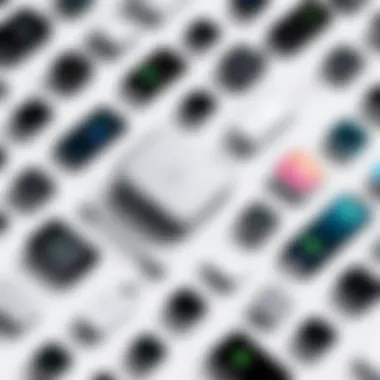
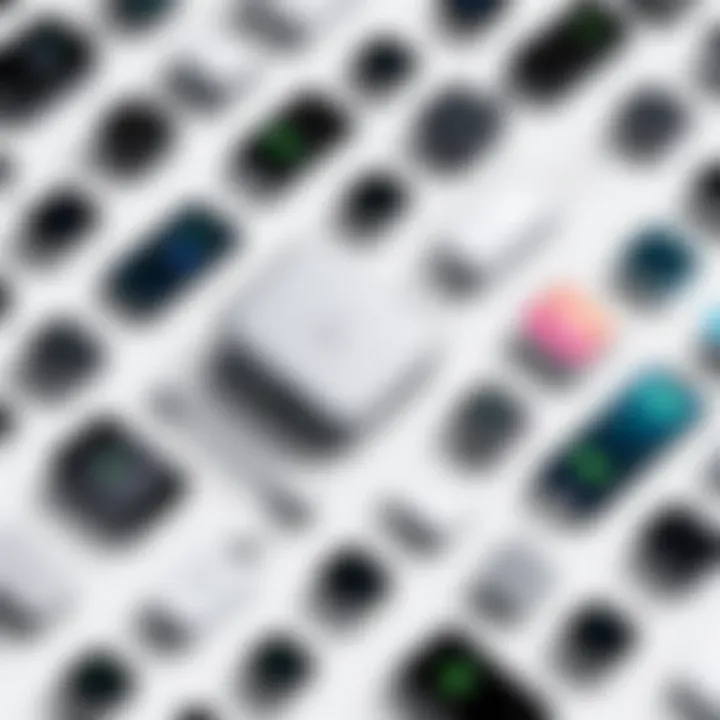
The evolution of wireless charging represents another significant development in the charging landscape. This technology has gained traction among users for its convenience and ease of use. The ability to recharge devices without needing to plug in a wire aligns perfectly with the modern consumer's preference for simplicity and accessibility.
Recent advancements in wireless charging technology have improved its efficiency and reduce charging times. Standards like Qi are instrumental in establishing uniformity in devices, ensuring that users can find compatible chargers across various manufacturers.
The impact of wireless charging extends beyond convenience. It opens a dialogue on design, enabling manufacturers to rethink the form and function of chargers. For instance, chargers can now double as decorative stands or integrate seamlessly into furniture or public spaces, making them a part of the broader lifestyle experience.
- Key benefits of wireless charging include:
- Elimination of wear and tear on connectors.
- Convenience in public charging stations.
- Enhanced device design freedom.
However, users should be cautious, as not all wireless charging solutions provide the same efficiency. The adaptors and devices implemented must be of high quality to ensure that battery longevity is not compromised.
The transition towards wireless and fast charging reflects consumers' expectations and the rapid pace of technological innovation. By understanding these trends, users can better navigate the choices they have in the current market.
Environmental Considerations
The relevance of environmental considerations in the discussion of iPhone charger manufacturers cannot be overstated. As the world becomes increasingly aware of the implications of electronic waste and resource consumption, manufacturers are pressured to rethink their operations.
This section explores sustainability practices within charger manufacturing and highlights the role of recycling programs that facilitate the responsible disposal of electronic products. Balancing technological innovation with environmental stewardship is becoming essential for manufacturers aiming to remain relevant in a market that values sustainability.
Sustainability in Charger Manufacturing
Sustainability in charger manufacturing involves the integration of eco-friendly practices throughout the production process.
Key Elements of Sustainability in Charger Manufacturing:
- Material Sourcing: Selecting sustainable materials, such as recyclable plastics, helps reduce the footprint of chargers.
- Energy Efficiency: Adopting energy-efficient manufacturing techniques decreases the overall energy consumption during the production cycle.
- Durability: Designing chargers that last longer minimizes the need for frequent replacements, reducing waste.
By focusing on these elements, charger manufacturers can significantly lessen their environmental impact. Companies like Apple have made commitments to use recycled materials, striving for a more sustainable supply chain. On the other hand, smaller third-party manufacturers must also conform to these practices to compete in the market.
The Role of Recycling Programs
Recycling programs are essential for managing end-of-life products. These programs ensure that chargers are disposed of responsibly, thus protecting the environment from harmful materials.
Benefits of Recycling Programs:
- Resource Recovery: Valuable components can be harvested from old chargers and reused in new products.
- Waste Reduction: Effective recycling programs directly contribute to decreasing landfill waste.
- Awareness and Education: Such initiatives educate consumers about responsible disposal methods, fostering a culture of sustainability.
Recycling programs not only manage waste but also promote the circular economy, where products are designed for longevity and recyclability.
Future of iPhone Chargers
The future of iPhone chargers holds significance for a variety of reasons. It is not just about how quickly a device can charge, but encompasses innovations that may redefine user experience and product longevity. This section explores two major aspects: emerging technologies in charging and anticipated changes in market dynamics.
Emerging Technologies in Charging
As technology advances, so does the nature of charging. Several emerging technologies are shaping this space.
- Fast Charging: Fast charging technology continues to improve. While Apple's current offerings, such as the 20W Power Adapter, offer quicker charging capabilities, new developments may lead to even faster solutions. This includes advancements in power delivery and voltage regulation.
- MagSafe: Introduced with the iPhone 12, MagSafe technology allows for easy and efficient wireless charging. It uses magnets to align the charger with the device, ensuring optimal efficiency. As this technology evolves, we might see higher wattage offerings.
- Solar Charging: As sustainability takes center stage, solar-powered options are gaining traction. This would allow users to harness renewable energy for everyday devices. While practical implementation is still in early stages, it presents an intriguing future.
- Ultrasonic Charging: This is an innovative concept that could create a charging area around a device, powering it without physical connections. While still theoretical, it could change how we think about charging altogether.
- Graphene Batteries: Research suggests that graphene batteries may enable faster charging times and longer lifespans for devices. If successful, this could completely shift the charging landscape.
These emerging technologies collectively promise a future where charging is more efficient, convenient, and environmentally friendly.
Anticipated Changes in Market Dynamics
The market dynamics surrounding iPhone chargers are expected to change significantly due to various factors.
- Increased Competition: With an expanding array of third-party manufacturers producing chargers, the market will likely become more saturated. Consumers will have more choices, often leading to competitive pricing and improved quality.
- Adaptation of Regulations: Governments are beginning to realize the importance of electronic waste and standardization. New regulations may push manufacturers toward producing compatible and eco-friendly chargers, likely diminishing the variety of incompatible options in the market.
- Consumer Awareness: As consumers become more tech-savvy, they will demand more detailed information about the quality and safety standards of chargers. Brands that invest in transparency will stand to gain consumer trust and loyalty.
- Sustainability Concerns: Environmental considerations will keep pushing manufacturers toward sustainable practices. This includes reducing packaging waste and sourcing materials responsibly, thus affecting production processes.
- Integration with Smart Home Devices: As smart home technology grows, we can expect chargers that integrate seamlessly with these ecosystems. Devices may communicate with chargers for optimized charging schedules, aligning with energy-saving features.
Closure
The evolution and impact of iPhone charger manufacturers highlight a critical component in technology. This article has examined various facets of charger production and advancement. Understanding these aspects can help consumers better navigate the market.
Recap of Key Points
- Charger Evolution: The timeline of iPhone chargers shows a significant shift from very basic chargers to advanced technology such as fast and wireless charging. This evolution is essential for keeping pace with consumer needs.
- Major Manufacturers: Companies like Apple and various third-party producers contribute to a diverse charging ecosystem. Each manufacturer plays a unique role, offering choices for consumers.
- Regulatory Standards: Quality standards and safety certifications ensure that chargers are safe to use. These standards are crucial for maintaining consumer trust.
- Compatibility Issues: As technology changes, so do compatibility concerns. Identifying the right charger for each iPhone model remains a key issue for users.
- Environmental Impact: The focus on sustainability and recycling in charger manufacturing is increasing. Manufacturers are now more aware of their environmental responsibilities.
- Future Prospects: Charting the future, emerging technologies promise greater efficiency. Anticipating changes can help consumers and manufacturers prepare for upcoming trends.
Final Thoughts on the Future of Chargers
Looking ahead, the landscape of iPhone chargers will likely shift further with advancements in technology. Emerging ideas, such as solar charging and enhanced wireless capabilities, could become mainstream. The market dynamics will transform as consumers increasingly seek faster and more sustainable options. Additionally, third-party manufacturers will likely continue to play a significant role, providing alternatives that often combine performance with cost benefits. In this continuing evolution, being informed is key for both consumers and manufacturers alike.







